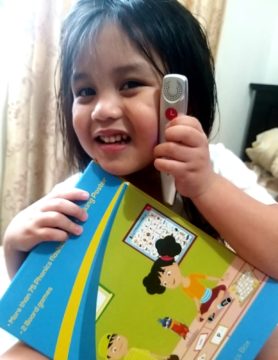
“The product is definitely worth the price”, endorse new parents in Malaysia.
February 21, 2023
Developing Your Child’s Potential
March 23, 2023Reading is a fundamental skill that plays a crucial role in shaping a child’s intellectual, social, and emotional development. However, the process of cultivating a love for reading in children can sometimes be challenging for parents and educators. Here, we will explore some strategies that can help make children love reading, including introducing books to babies and teaching them to read.

Books for Babies
Many parents may assume that it is pointless to introduce books to their babies who cannot read yet. However, research shows that introducing books to babies can have a significant impact on their cognitive and language development. Babies are naturally curious, and they learn by exploring their environment, including books. Therefore, parents should make a habit of reading to their babies from an early age, even if the child is too young to understand the words.
One way to introduce books to babies is to incorporate them into their daily routines. For instance, parents can read a book to their baby during feeding or before bedtime. This not only helps create a reading habit but also provides an opportunity for bonding between parent and child. Additionally, parents can choose books with colorful pictures, textures, and sounds that appeal to the baby’s senses. This can help keep the baby engaged and interested in the book.
Another way to introduce books to babies is to create a reading nook in their room. This can be a cozy corner with a comfortable chair, a small bookshelf, and some soft cushions or blankets. Parents can encourage their babies to explore the books in the nook and choose the ones they want to read. This can help foster a love for books and reading from an early age.

Teaching a Baby to Read
Teaching a baby to read may sound like a daunting task, but it is possible with the right approach. It is important to note that teaching a baby to read does not mean forcing them to memorize words or read fluently at a young age. Instead, it involves creating a conducive environment for the baby to develop their language skills and literacy abilities.
One way to teach a baby to read is through interactive reading. This involves reading a book with the baby and pointing to the words as you read them out loud. This can help the baby associate the words with the sounds and meanings, even if they cannot read the words themselves. Additionally, parents can use books with simple words and repetitive phrases that the baby can easily remember.
Another way to teach a baby to read is through phonics. This involves teaching the baby the sounds that letters and combinations of letters make. For instance, parents can teach their babies the sounds of the letters in their name or common words like “cat” or “dog.” This can help the baby recognize the sounds of words when they encounter them in books or in their environment.
Furthermore, parents can use flashcards or picture cards to help their babies learn new words and concepts. This can be done by showing the baby a picture and saying the name of the object or concept. Parents can also ask the baby to identify the picture or object when they encounter it in real life or in a book.

The A+ Program from Learning Time has some fantastic stuff that does exactly the above. Its not just reading; its an entire ecosystem of learning. Everything from flashcards, books, videos, apps; all that a child needs to take to reading and learning.
In conclusion, cultivating a love for reading in children requires patience, creativity, and consistency. Introducing books to babies and teaching them to read from an early age can help create a foundation for lifelong literacy and learning. However, it is important to remember that the goal is not to force children to read but to make reading an enjoyable and fulfilling experience. By incorporating books into their daily routines, creating a reading nook, and using interactive reading and phonics, parents can help their children develop a love for books and reading that will serve them well throughout their lives.




